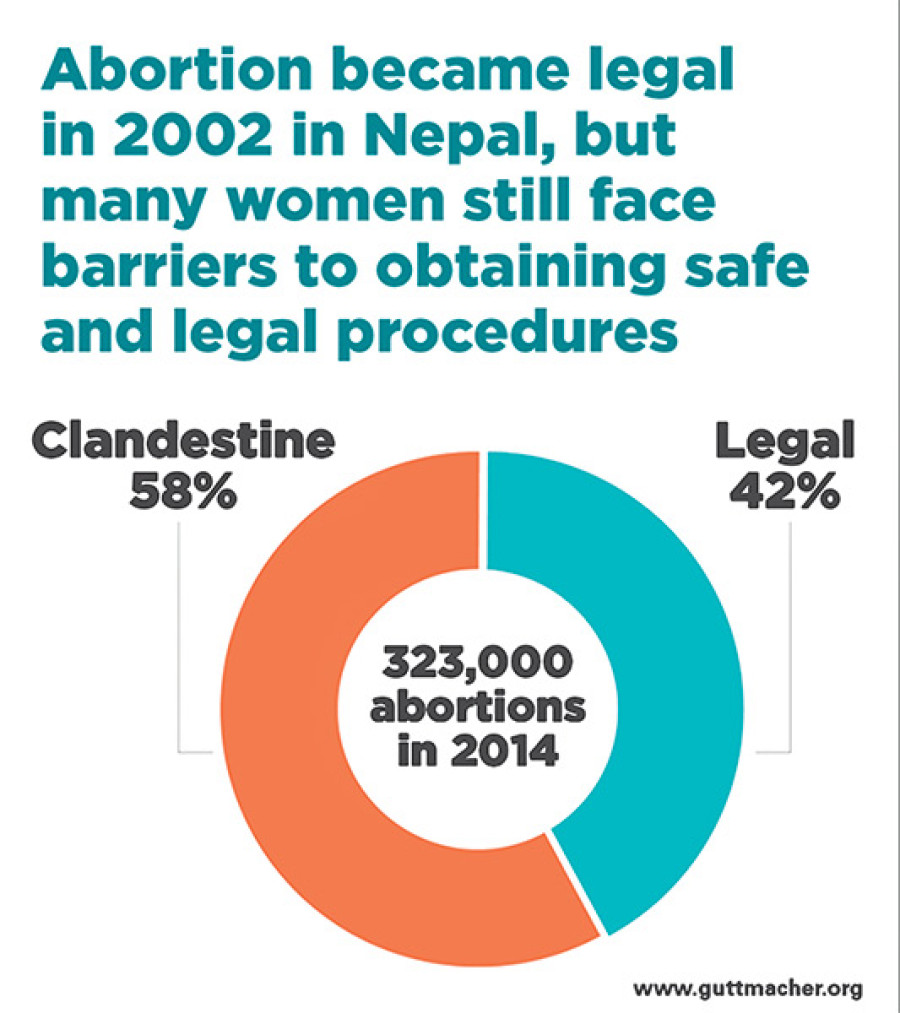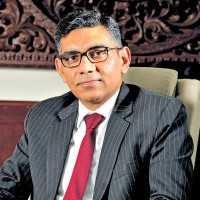National
Unsafe abortions menacingly high
Half the women wanting to terminate their pregnancies undergo illegal abortions in the country, many of them risking lives in the aftermath—a fact that seriously questions the effectiveness of the family planning programme in Nepal.
Manish Gautam
Half the women wanting to terminate their pregnancies undergo illegal abortions in the country, many of them risking lives in the aftermath—a fact that seriously questions the effectiveness of the family planning programme in Nepal.
A recent study has shown that 58 percent women undergo illegal abortions at clinics and hospitals. All the cases remain unaccounted for in the national data.
The study titled “Abortion Incidence and Unintended Pregnancy in Nepal”, published in the journal International Perspectives on Sexual and Reproductive Health, states that among the 323,000 abortions reported in 2014, only 137,000 were done properly. It also states that for an estimated 1,000,000 pregnancies annually in the country, 50 percent are unintended. Up to 62 percent of the unwilling couples choose to abort, the study revealed.
“Among the 80,500 people who were treated for complications including miscarriage and induced abortions, almost 54,500 women visited health facilities after the illegal abortion,” said Mahesh Puri, the lead author of the article.
Puri said the research was the first attempt to quantify the number of abortions taking place in the country. The study claims that around 36 percent cases did not result in complications, while the remaining two-fifths required care at a health facility.
Nepal legalised abortion services in 2002 from various facilities registered with the Health Ministry. However, following a 2009 order of the Supreme Court to make abortion services accessible to all women, the government expanded the services extensively. The decision was lauded as a major achievement in ensuring women’s rights.
The central region has the highest abortion rate, which the authors attribute to easily available clinical services. Although unintended pregnancies might appear high in Nepal, the rates are lower compared to Pakistan and Bangladesh, the researchers claimed.
The findings corroborate the national data that show at least 27 percent women in the country have no access to contraceptives. Such unmet needs among the girls and women of the reproductive age lead to unsafe sex, which often requires abortion services. Improvements in access to contraception have been recommended in all the regions.
“Nepal’s terrain makes delivery of contraceptive services challenging. However, policymakers and other relevant parties need to devise programmes to improve access in remote areas,” the paper says.
Dr Naresh Pratap KC, director of the Family Health Division of the government, expressed worry at the rate of undocumented abortions. “We are targeting our programmes at people of reproductive age, encouraging them to use contraceptives,” said Dr KC. “We will come up with other approaches soon to attract these girls and women to our clinics.”




 16.12°C Kathmandu
16.12°C Kathmandu













%20(1).jpg&w=300&height=200)

